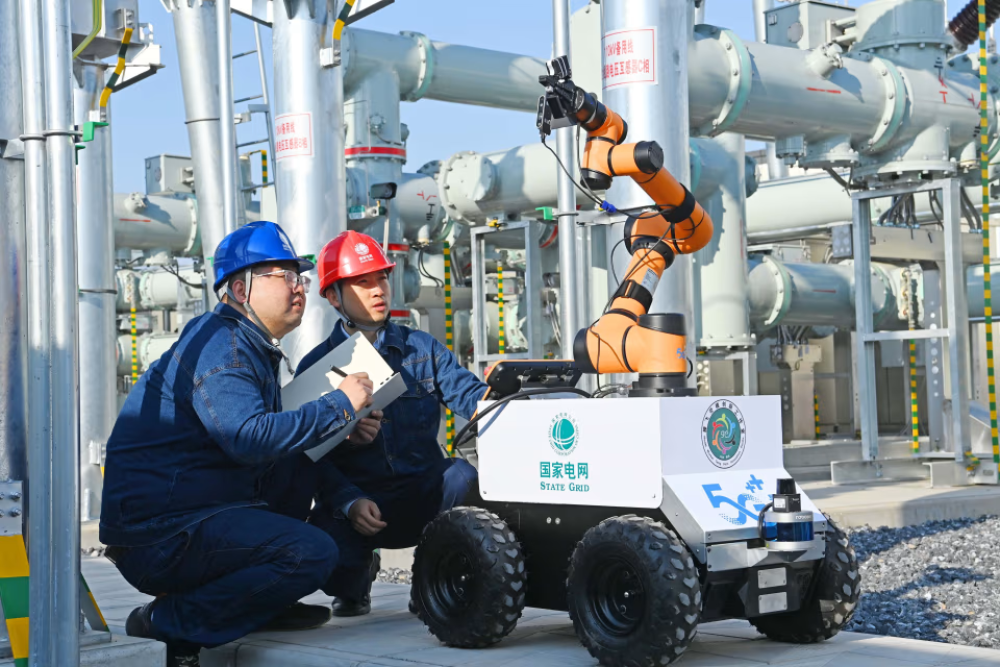The U.S. has tried almost everything to win the tech race against China—across areas as varied as AI, energy, autonomous vehicles, drones and EVs. So far, none of it has worked.
The result is a fierce debate between senior leaders in the current administration, and critics outside it. White House officials and their proxies are almost uniformly in favor of choking off China’s tech advance by banning the export of AI microchips and the tools to make them. Some outside the administration—including the head of
Nvidia NVDA -2.92%decrease; red down pointing triangle—say such policies are backfiring by accelerating China’s development of its own tech ecosystem.
The debate comes down to this: Is it better to have China dependent on U.S. tech, or is the national security risk of China having our tech just too great?
Chips ahoy
Among those ramping up criticism of current export controls is
Jensen Huang, chief executive of U.S. chip colossus Nvidia. China could spend $50 billion on chips and servers for AI in 2026, he said, and his company would miss out on that market as a result of
a new ban on advanced AI chip exports to China.
On Wednesday, during an earnings call, Huang doubled down on his criticism, saying “Shielding Chinese chip makers from U.S. competition only strengthens them abroad and weakens America’s position. Export restrictions have spurred China’s innovation and scale.” So far, Nvidia’s restricted access to China has
done little to dent its revenues.
The Alibaba Zhejiang Cloud Computing Renhe Data Center in Hangzhou, in Zhejiang province, China, is the city’s first super data center. Chinese electric vehicle maker Baidu's Apollo RT6 robotaxi drives in Wuhan, China.Cfoto/DDP/ZUMA Press, Bloomberg News
Each of Huawei’s latest Ascend 910C AI chips are only
one-third as powerful as Nvidia’s, but five times as many are crammed into each of the company’s CloudMatrix 384 AI supercomputers. In terms of raw power, and in the all-important metric of how much memory is crammed into each CloudMatrix computer, Huawei is already beating Nvidia.
And though Huawei’s CloudMatrix 384 requires
four times as much electricity, China has a huge advantage in terms of energy production, says Doug O’Laughlin, an analyst at SemiAnalysis who has studied Huawei’s new AI supercomputers. “China has been adding energy production for the past 10 years, and has the entire supply chain on lock to continue to do that,” he adds.
SMIC, which makes Huawei’s processors, is now the third-biggest chip maker in the world, and has managed to innovate in the manufacture of high-quality chips despite having older-generation, pre-export-ban tech.
Bryan Burack, a China analyst at the Heritage Foundation, the conservative DC think tank with significant influence in the current administration, says export controls on tech like AI are more important than ever because the U.S. is in a new Cold War. Burack was a member of the National Security Council until last week, when
100 staffers were cut, and says his time on the council strengthened his convictions on the matter.
“Are we comfortable helping China create dual-use AI that can be used to acquire targets for guided weapons,” Burack says, “even if it’s a sound business?”
Over and over again, China has purchased advanced tech from the U.S. and copied it, then scaled it into huge businesses, a process O’Laughlin likens to a student copying another’s homework. “I sound almost antibusiness saying this, but I really can’t express enough that we shouldn’t make their jobs easier,” he adds.
Trump’s first term
Concerns about China’s progress in tech are hardly new in Washington, but the push to hamper its development kicked into high gear during President Trump’s first administration, according to industry insiders.
In 2018, then-commerce secretary Wilbur Ross cut off Chinese telecom company ZTE from U.S. tech, such as microchips, over national-security concerns. This effectively ended the global ambitions of the Chinese government-connected company.
“At a stroke, the U.S. government demonstrated to China’s government and China’s tech companies that it had an at-will ability to kneecap China’s tech leaders,” says Dan Wang, a research fellow at the Hoover Institution at Stanford University.
A string of restrictions on microchips and software followed, notably for Chinese smartphone and telecom giant Huawei. At that time, even Chinese tech companies were unwilling to buy domestically made chips because they were inferior to American-designed chips manufactured in the U.S., South Korea and Taiwan, says Rui Ma, a Silicon Valley-based angel investor and China-tech analyst. With no other option, China’s tech companies were forced to buy local.
A Kirin 9000s chip fabricated in China by Semiconductor Manufacturing International Corp. being removed from inside a Huawei smartphone. Shoppers at a Huawei store in Shanghai.James Park/Bloomberg News, HECTOR RETAMAL/AFP/Getty Images
This doesn’t mean China’s domestic chipmaking ecosystem is equal to what can be marshaled by the U.S. and its allies. But the idea that it is far behind—or will remain so forever—flies in the face of history, says Patrick Moorhead, a semiconductor-industry analyst who was an executive at AMD for 11 years.
“I’ve been in tech for 30 years, and I’ve heard a lot of, ‘Oh, China won’t figure this out,’” he adds. “Now I think the only question is
when they will figure it out.” In the long run, China could be in a position to locally source everything it needs to match or even exceed the capabilities of companies like Taiwan’s
TSMC and U.S.-based Intel, he says.
Why China?
The experts I spoke with pointed out that China has a unique combination of assets that no other country in the history of America’s trade wars has possessed.
Its gigantic population is exceptionally well-trained, from skilled factory workers to engineers educated in the country’s universities. Nvidia’s Huang has said repeatedly that half of the world’s AI engineers are in China. Nvidia recently
came under fire from U.S. senators for building a new engineering office in Shanghai.
It also has a huge domestic market, so it can incubate companies within its borders before they go global. And while China is dependent on the U.S. and the rest of the world for many raw materials and specialized goods, the Chinese Communist Party’s well-organized, well-funded and consistent push for self-sufficiency means those dependencies are shrinking. Year after year, the country produces a greater proportion of everything it needs, from the tiniest chip components to the biggest cargo ships.
In the best of all worlds, the U.S. would have allowed its chip and software champions to continue dominating the domestic Chinese market, says Wang. But since export controls initiated years ago have made that impossible, the only logical way forward may be to keep up the controls—and probably even tighten them.
“What we have now is not the second-best solution, but a seventh-best solution,” says Wang. “There’s certainly no way to restore trust with Chinese companies.”




